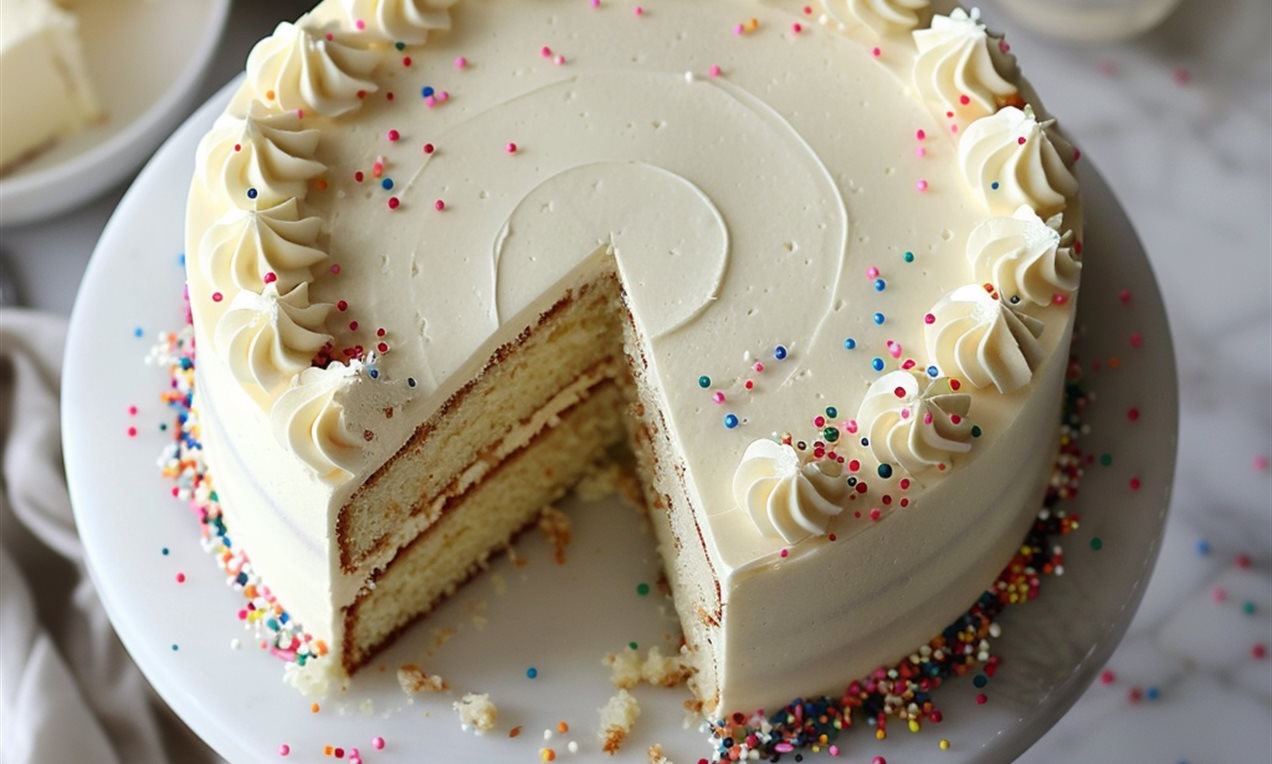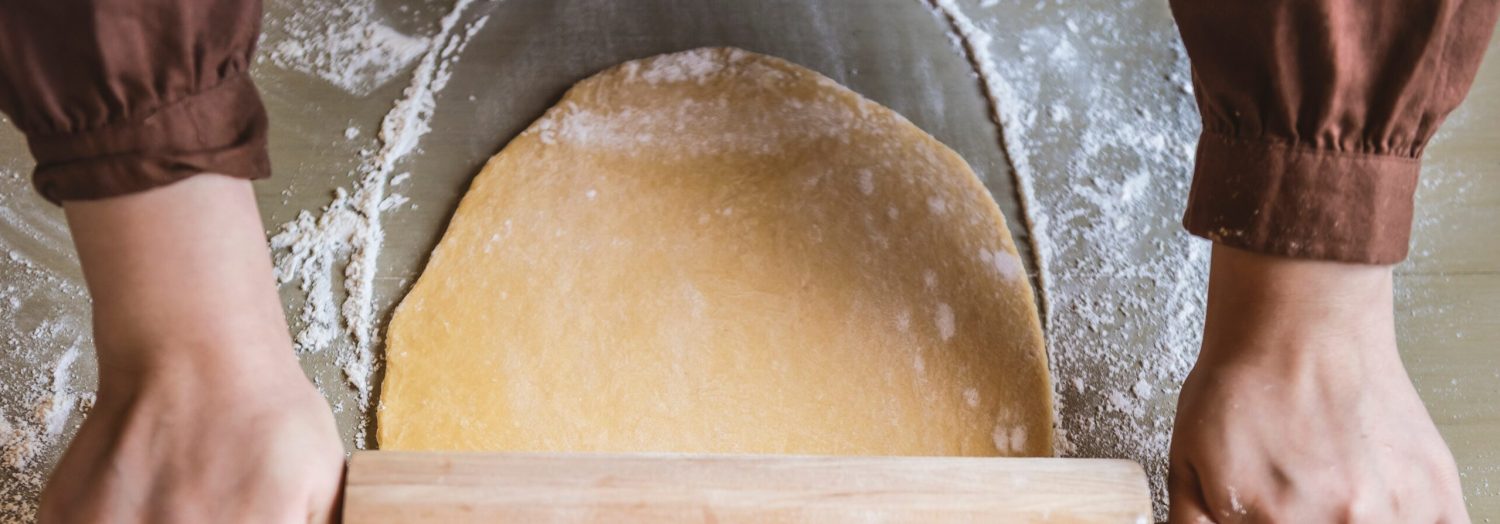This delightful vanilla cake is perfect for any occasion, whether it's a birthday, a family gathering, or just a sweet treat to enjoy with your afternoon tea. With its moist texture and rich vanilla flavor, this cake is sure to become a favorite in your household. Follow these simple steps to create a homemade vanilla cake that will impress everyone.
Most of the ingredients for this vanilla cake are common pantry staples, but there are a few you might need to pick up at the supermarket. Vanilla extract is essential for that rich flavor, so make sure to get a good quality one. Unsalted butter is preferred to control the salt content in the recipe. If you don't have baking powder at home, it's crucial for the cake's rise and texture.

Ingredients for Vanilla Cake Recipe
All-purpose flour: The base of the cake, providing structure and texture.
Sugar: Adds sweetness and helps to tenderize the cake.
Unsalted butter: Adds richness and moisture to the cake.
Milk: Helps to create a smooth batter and adds moisture.
Vanilla extract: Provides the classic vanilla flavor.
Eggs: Bind the ingredients together and add structure.
Baking powder: Helps the cake rise and become fluffy.
Salt: Enhances the flavors of the other ingredients.
Technique Tip for This Recipe
To achieve a light and fluffy texture for your vanilla cake, make sure to cream the butter and sugar thoroughly until the mixture is pale and fluffy. This process incorporates air into the batter, which helps the cake rise properly. Additionally, when adding the eggs, do so one at a time and beat well after each addition to ensure they are fully incorporated. This will help maintain the emulsion and prevent the batter from curdling.
Suggested Side Dishes
Alternative Ingredients
all-purpose flour - Substitute with cake flour: Cake flour has a lower protein content, resulting in a lighter and more tender cake.
all-purpose flour - Substitute with gluten-free flour blend: For those with gluten intolerance, a gluten-free blend can be used to achieve similar results.
sugar - Substitute with honey: Honey adds moisture and a different flavor profile, but use ¾ cup honey for every cup of sugar and reduce the liquid by ¼ cup.
sugar - Substitute with coconut sugar: Coconut sugar has a lower glycemic index and adds a subtle caramel flavor.
unsalted butter - Substitute with margarine: Margarine can be used as a non-dairy alternative, though it may slightly alter the flavor.
unsalted butter - Substitute with coconut oil: Coconut oil is a good dairy-free option that adds a slight coconut flavor.
milk - Substitute with almond milk: Almond milk is a dairy-free alternative that works well in baking.
milk - Substitute with buttermilk: Buttermilk adds a tangy flavor and helps to tenderize the cake, but reduce the baking powder to 1.5 teaspoon and add 0.5 teaspoon baking soda.
vanilla extract - Substitute with almond extract: Almond extract provides a different but complementary flavor to vanilla.
vanilla extract - Substitute with maple syrup: Maple syrup adds a unique sweetness and depth of flavor.
eggs - Substitute with flax eggs: Mix 1 tablespoon ground flaxseed with 3 tablespoon water per egg for a vegan alternative.
eggs - Substitute with applesauce: Use ¼ cup unsweetened applesauce per egg for a moist and slightly sweet cake.
baking powder - Substitute with baking soda and cream of tartar: Use ¼ teaspoon baking soda plus ½ teaspoon cream of tartar for each teaspoon of baking powder.
baking powder - Substitute with self-rising flour: Self-rising flour already contains baking powder and salt, so adjust the recipe accordingly.
salt - Substitute with sea salt: Sea salt can be used in the same quantity and may add a slightly different mineral flavor.
salt - Substitute with kosher salt: Kosher salt has larger grains, so use slightly more to achieve the same level of saltiness.
Other Alternative Recipes Similar to This Cake
How to Store or Freeze Your Cake
Allow the vanilla cake to cool completely on a wire rack. This prevents condensation from forming inside the storage container, which can make the cake soggy.
Wrap the cooled cake tightly in plastic wrap. Ensure there are no gaps or openings to keep the cake fresh and prevent it from drying out.
Place the wrapped cake in an airtight container or a resealable plastic bag. This adds an extra layer of protection against moisture and air.
Store the cake at room temperature if you plan to consume it within 2-3 days. Keep it in a cool, dry place away from direct sunlight.
For longer storage, place the wrapped cake in the refrigerator. This will extend its freshness for up to a week. Remember to bring the cake to room temperature before serving for the best texture and flavor.
To freeze the cake, wrap it in a layer of aluminum foil over the plastic wrap. This helps prevent freezer burn and preserves the cake's moisture.
Label the wrapped cake with the date before placing it in the freezer. This helps you keep track of how long it has been stored.
Freeze the cake for up to 3 months. When ready to enjoy, thaw the cake in the refrigerator overnight. For quicker thawing, leave it at room temperature for a few hours.
If you have frosted the cake, flash freeze it first by placing it uncovered in the freezer for about an hour. Once the frosting is firm, wrap it tightly in plastic wrap and aluminum foil.
For individual servings, slice the cake before freezing. Wrap each slice in plastic wrap and place them in a resealable plastic bag. This makes it easy to grab a single serving without thawing the entire cake.
How to Reheat Leftovers
Oven Method: Preheat your oven to 350°F (175°C). Wrap the leftover vanilla cake in aluminum foil to prevent it from drying out. Place it on a baking sheet and heat for about 10-15 minutes, or until warmed through. This method helps maintain the cake's moisture and texture.
Microwave Method: Place a slice of vanilla cake on a microwave-safe plate. Cover it with a damp paper towel to keep it from drying out. Microwave on medium power for 20-30 seconds. Check the cake and repeat in 10-second intervals if needed. Be cautious not to overheat, as this can make the cake rubbery.
Steaming Method: If you have a steamer, this is a gentle way to reheat your vanilla cake. Place the cake on a heatproof plate and put it in the steamer. Steam for about 5-7 minutes. This method helps retain the cake's moisture and keeps it soft.
Toaster Oven Method: Preheat your toaster oven to 350°F (175°C). Place the vanilla cake on a piece of aluminum foil or a baking tray. Heat for about 5-10 minutes. This method is quicker than a conventional oven and works well for smaller portions.
Skillet Method: For a quick reheat, you can use a non-stick skillet. Place the vanilla cake slice in the skillet over low heat. Cover with a lid and heat for about 2-3 minutes on each side. This method can give the cake a slightly crispy edge while keeping the inside moist.
Essential Tools for Baking
Oven: Used to bake the cake at a consistent temperature of 350°F (175°C).
9x9 inch pan: The baking pan where the cake batter will be poured and baked.
Mixing bowl: A medium-sized bowl to cream together the sugar and butter, and to mix other ingredients.
Electric mixer: Useful for creaming the sugar and butter together and for beating in the eggs.
Measuring cups: Essential for accurately measuring the flour, sugar, milk, and butter.
Measuring spoons: Used to measure the vanilla extract, baking powder, and salt.
Spatula: Handy for scraping down the sides of the mixing bowl to ensure all ingredients are well combined.
Whisk: Can be used to combine the flour and baking powder before adding to the creamed mixture.
Cooling rack: Allows the cake to cool evenly after baking.
Toothpick: Useful for testing the doneness of the cake; it should come out clean when inserted into the center of the cake.
Butter knife: Can be used to spread butter in the pan for greasing.
Flour sifter: Helps to evenly distribute flour and baking powder, ensuring a smooth batter.
Oven mitts: Protect your hands when placing the cake in and taking it out of the oven.
How to Save Time on This Recipe
Pre-measure ingredients: Measure out all ingredients before starting. This ensures a smooth workflow and reduces preparation time.
Use room temperature ingredients: Allow butter, eggs, and milk to reach room temperature. This helps them blend more easily and speeds up mixing.
One-bowl method: Combine dry ingredients in one bowl and wet ingredients in another. This minimizes cleanup and streamlines the process.
Preheat the oven early: Turn on the oven before you start mixing. This ensures it’s ready when you are.
Use parchment paper: Line your baking pan with parchment paper for easy removal and less cleanup.

Vanilla Cake Recipe
Ingredients
Main Ingredients
- 2 cups All-purpose flour
- 1.5 cups Sugar
- 0.5 cup Unsalted butter softened
- 1 cup Milk
- 2 teaspoon Vanilla extract
- 2 units Eggs
- 2 teaspoon Baking powder
- 0.5 teaspoon Salt
Instructions
- Preheat your oven to 350°F (175°C). Grease and flour a 9x9 inch pan.
- In a medium bowl, cream together the sugar and butter. Beat in the eggs, one at a time, then stir in the vanilla.
- Combine flour and baking powder, add to the creamed mixture and mix well. Finally stir in the milk until batter is smooth. Pour or spoon batter into the prepared pan.
- Bake for 30 to 40 minutes in the preheated oven. Cake is done when it springs back to the touch.
Nutritional Value
Keywords
Suggested Appetizers and Main Courses
More Amazing Recipes to Try 🙂
- Apple Coleslaw Recipe15 Minutes
- Jell-O Poke Cake Recipe45 Minutes
- Apricot Jam Recipe45 Minutes
- Gurkensalat German Cucumber Salad Recipe15 Minutes
- Brazilian Cheese Bread Recipe30 Minutes
- Fruit Salsa and Cinnamon Chips Recipe25 Minutes
- Layered Mexican Dip Recipe15 Minutes
- Bacon Jam Recipe50 Minutes

Leave a Reply